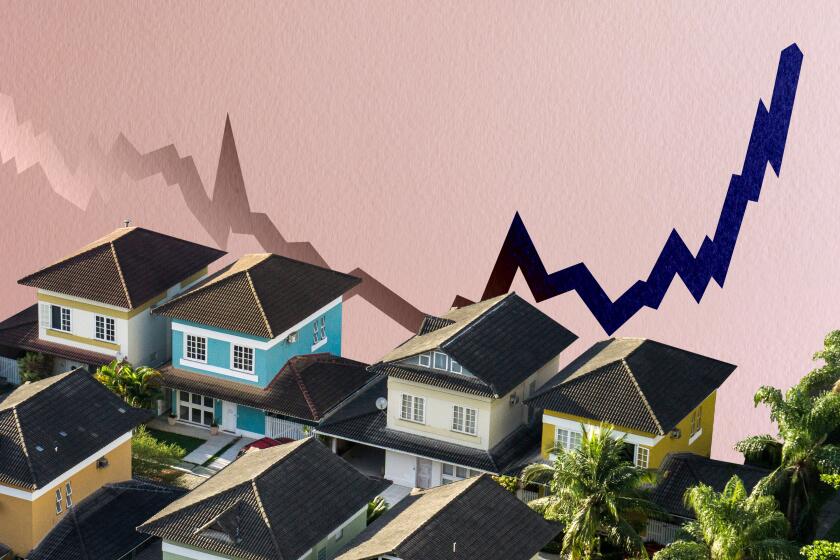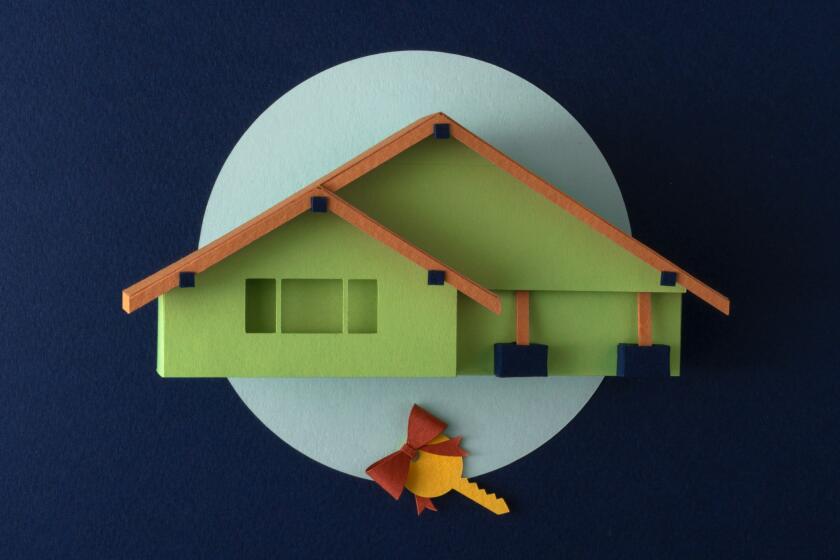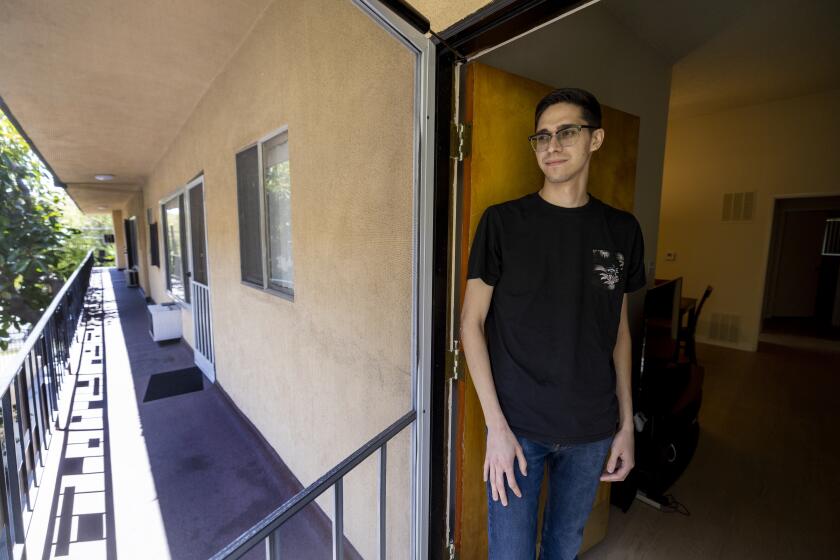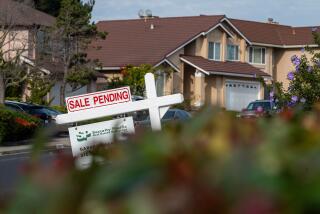Southern California housing prices will fall, some experts say. The question is how much
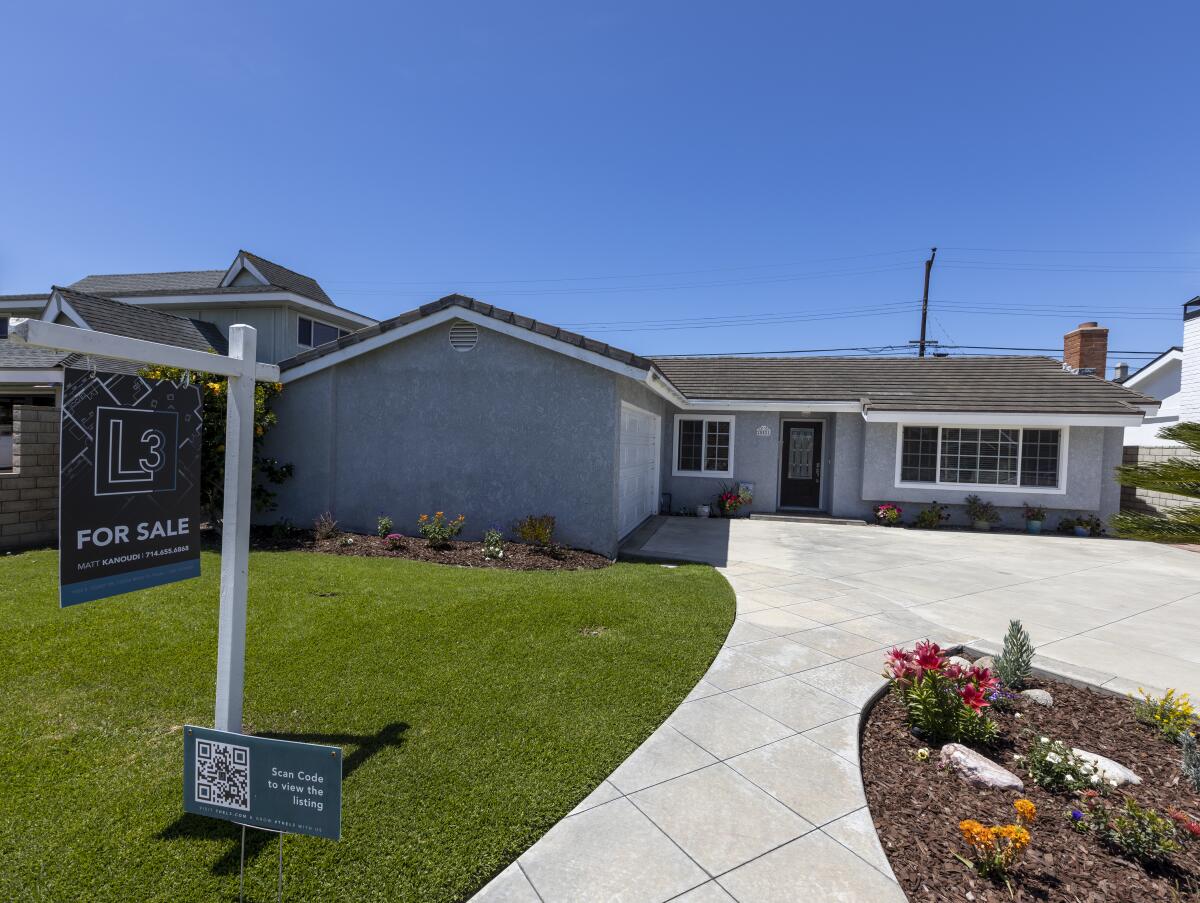
- Share via
Rising mortgage rates have slowed the housing market across the nation and Southern California. Sales are down, inventory is rising and many prospective buyers and sellers have a simple question: Will home prices fall?
According to some analysts, the prospect is growing more likely as the slowdown deepens, with some now adjusting their forecasts to call for price declines next year.
Such predictions mark a shift from earlier this year, when there was greater expert agreement that rising mortgage rates would simply slow price appreciation. That is: Prices would keep climbing but less than they had in the last two years.
Many analysts still see that slower-growth scenario as more likely. Few well-known experts — if any — predict price declines anywhere near what happened during the Great Recession.
But the fact some major forecasters now foresee sustained price declines — something that hasn’t happened in more than a decade — underscores just how quickly the housing market is changing.
“It’s noteworthy,” said Jordan Levine, chief economist at the California Assn. of Realtors. “Prices are going to go down.”
Low mortgage interest rates have helped drive up home prices for a decade. What happens now that the rate for a 30-year mortgage has hit 5%?
Levine said it was just over the last month that he became convinced prices would turn negative.
Two factors helped shift his view. First, he ran the numbers on how much repeated surges in mortgage rates affected purchasing power. Then he saw prospective buyers pull back in real time.
Mortgage rates started the year in the low 3% range but had risen above 4.5% by late March, surpassed 5% in April and surged to nearly 6% this month, according to Freddie Mac’s closely observed mortgage survey.
For a $760,000 house, the current median price in Southern California, that means a monthly mortgage payment in early January would’ve been $3,493, including property tax and insurance, with a 20% down payment, according to a Redfin mortgage calculator.
In March, that payment was $506 more expensive; in April, $655 more; and as of last week it was nearly $1,000 higher at $4,428.
A growing number of home sellers have responded to waning demand by dropping their list prices, a first step if overall sales prices are going to fall in the future.
A no-BS guide to buying your first home in Southern California.
Levine is still putting the final touches on a forecast to be released in July. But for now, he expects the California median sales price for all of 2022 to be up 9.7% from a year earlier, a sharp slowdown from the nearly 20% growth seen in 2021.
Then in 2023, he expects the Federal Reserve’s actions to fight inflation will cause a mild recession and the combination of job losses and higher rates will cause the statewide median price to fall 7.1% compared with this year, with similar declines in Southern California specifically.
Others that recently shifted forecasts to include home price declines in 2023 are Capital Economics, an international economic research firm, and John Burns Real Estate Consulting in Irvine.
In May, John Burns started forecasting that both national and Southern California prices would decline next year, in part because the firm sees a recession as increasingly likely.
In 2023, the consulting firm expects declines in the mid single digits in Los Angeles and Orange counties and for prices to fall in the high single digit range in the Inland Empire.
The firm forecasts prices will drop at a somewhat smaller rate in 2024 both locally and nationally, before rising slightly in 2025.
Mark Zandi, chief economist at Moody’s Analytics, said prices could fall even absent a recession.
If rates don’t jump “meaningfully over 6% for an extended period” and the economy avoids a recession, Southern California home prices should be largely flat over the next few years, though some communities that saw dramatic pandemic booms could see declines.
But if rates rise to around 6.25% or 6.5% and hold there, Zandi said, Southern California prices would probably fall around 5% without a recession and potentially as much as 10% with a recession.
He said the most likely scenario is flat prices, but if he were an odds maker he’d say there’s a 40% probability of Southern California home prices falling at least 5% from peak to trough, up from a 25% chance in May.
He and other experts said it’s extremely unlikely home prices would collapse like they did during the Great Recession.
The number of apartments available for rent in L.A. County is the lowest it’s been in two decades. The booming job market isn’t helping.
In large part, that’s because many current owners don’t like to sell for less than their neighbor did a few months ago, which experts predict will limit price declines.
Things were different last time around. Risky lending during the early 2000s housing bubble caused a wave of foreclosures and sparked a financial crisis, sending Southern California prices down 50% from 2007 to 2009, according to numbers from DQNews.
Now, most economists think any recession would be mild. Tighter lending standards also mean those buying their homes during this boom could largely afford them and far fewer people will be forced to unload their properties, experts said.
Plus, there’s a large cohort of millennials in their early 30s looking to buy a home for the first time.
“There won’t be as many foreclosures and distressed sales, which is what you need to get prices way down,” Zandi said.
More to Read
Inside the business of entertainment
The Wide Shot brings you news, analysis and insights on everything from streaming wars to production — and what it all means for the future.
You may occasionally receive promotional content from the Los Angeles Times.
